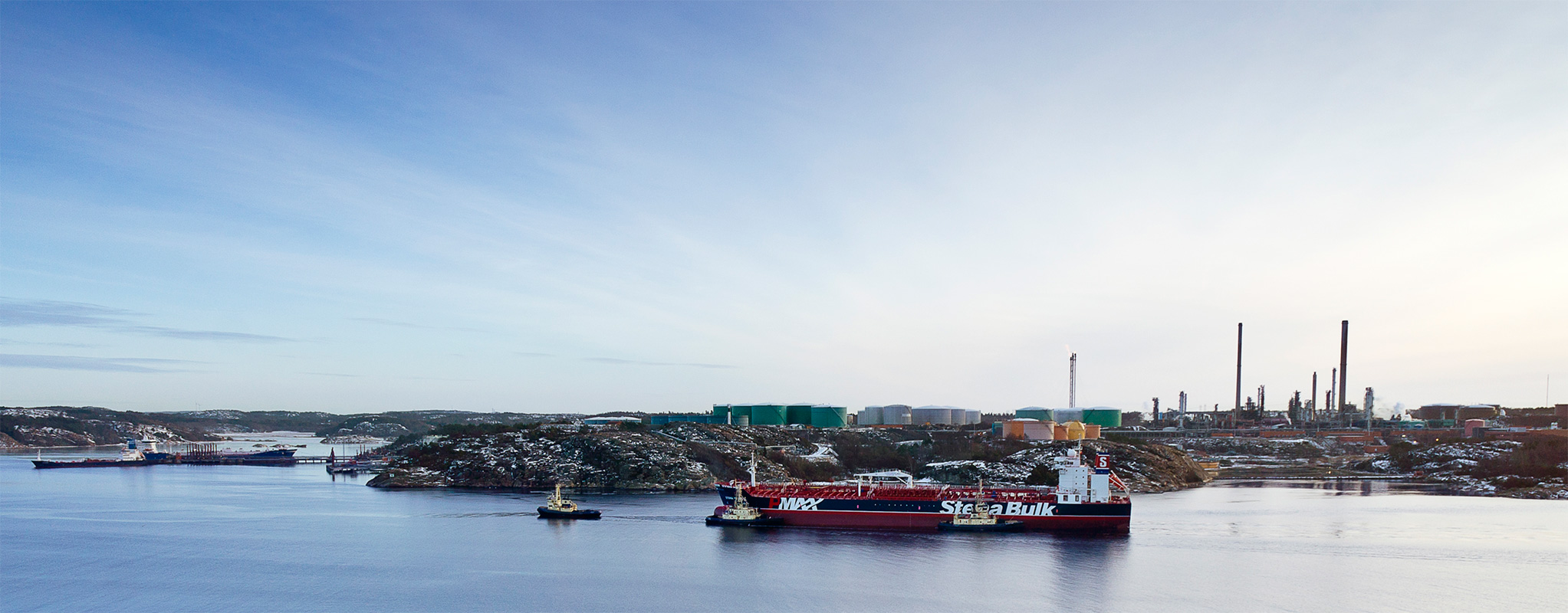Case
”A voyage beyond the ordinary”
When Stena Polaris left the Russian port of Ust Luga in mid-September, 2013 and navigated out into the Gulf of Finland, it was the start of a special voyage. She was to be the first P-MAX tanker to traverse the Northeast Passage, which lies north of Europe and Asia. The voyage to the final destination of Yeosu in South Korea took 35 days and was characterised by polar bears, nuclear-powered icebreakers and dead silent waters.
Using the Northeast Passage instead of the traditional route through the Suez Canal between Europe and Asia could cut two weeks off the voyage time. As the ice around the Arctic has become thinner, the potential for using this route has increased. This potential is now being examined in a new collaboration between Stena and the Korean company Hyundai Glovis. The P-MAX tanker Stena Polaris was chartered to make the first voyage and Patrick Svahn was there on board.
In his role as Manager Commercial Operations at Stena Bulk, his task was to gather knowledge on the practicalities of transiting the waters north of Europe and Asia – a route that is approx. 5,500 nautical miles long. With several years at sea, Patrik is no landlubber, but when he climbed onto the boat that would take him to Stena Polaris out at sea off Vardø in Norway, he was not quite sure what to expect.
“An adventure”
– You can only call it an adventure, says Patrik. Although the route has opened up more and more in recent years, comparatively few vessels have traversed the Northeast Passage so far. Sailing in relatively unexplored waters is an amazing feeling that’s hard to describe. You really can talk about being in the middle of nowhere up there; it’s dead silent – an almost menacing environment.
Even when Patrik joined the vessel off north eastern Norway, the internet connection on board was almost non-existent, and a satellite phone was the only contact with the outside world until the Bering Strait.
– The feeling of being so cut off and deserted was really special, scary and beautiful at the same time. And then to see walruses playing alongside the vessel, polar bears moving on the huge ice floes and the northern lights painting the dark night sky green! Without exaggeration I can say that it was a voyage beyond the ordinary.
Ice class put to the test
The Russian authorities have strict requirements on which vessels may transit the Northeast Passage. There was an ice advisor on board, whose task was to interpret the daily satellite images of the ice and pick out the best route to sail. On some parts of the route, vessels must also be escorted by nuclear-powered icebreakers.
– The icebreakers escorting us were really intended for shallower waters. With the thin ice, this was not a problem, but sometimes the ice closed up in the channel behind them as we moved in convoy. That’s when Stena Polaris really had her ice class put to the test, and we got a first-hand view of what stresses a ship has to bear in order to transit these waters.
Safety work on another level
Safety awareness and crew competence are other areas where shipping companies have to meet strict requirements. Patrik attended safety drills on board during the voyage and was impressed by what he saw.
– I have worked on Swedish ships where they are generally first rate from a safety perspective. But here they took it to another level, particularly in terms of everyone’s safety-first attitude and positive approach to safety activities. And this produced results – the only accident that occurred during the voyage was when third mate Arzan’s coffee cup ended up in pieces during a storm …
Read more at www.stenanorthernsearoute.com.


